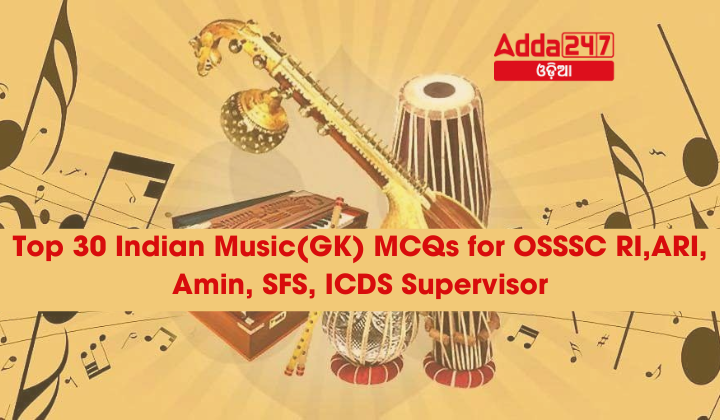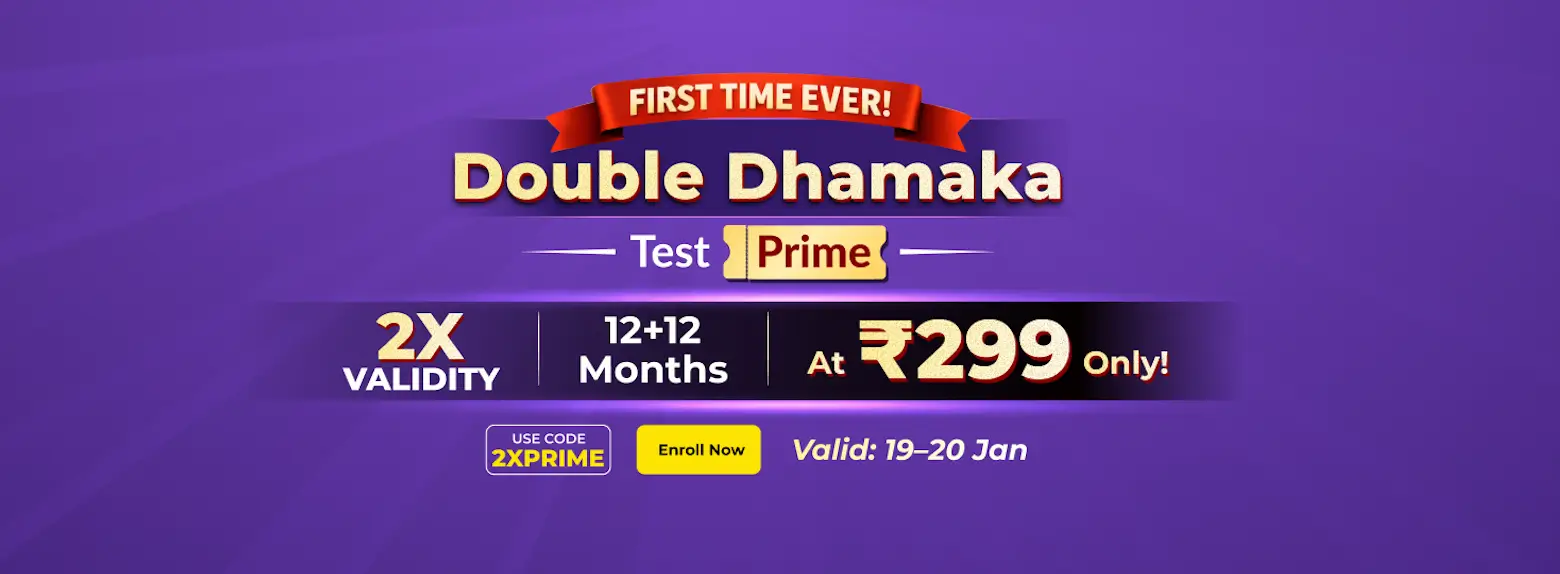Preparing for competitive exams like OSSSC RI, ARI, Amin, SFS, and ICDS Supervisor requires a strong understanding of various subjects, including Indian music. Indian music, with its rich heritage and diversity, is an important topic in the general knowledge section of these exams. Here are the top 30 multiple-choice questions (MCQs) on Indian music to help you prepare effectively.
Top 30 Indian Music(GK) MCQs for OSSSC RI,ARI, Amin, SFS, ICDS Supervisor
What type of music involved the chanting of verses set to musical patterns during the later Vedic period?
(a) Bhakti
(b) Sangama
(c) Jatigan
(d) Khayal
Answer: B. Sangama
Which ancient text is considered the first work to clarify and elaborate on the subject of musicology?
(a) Sangeet Ratnakara
(b) Brihaddeshi
(b) Natyashastra
(d) Swaramela-Kalanidhi
Answer: C. Natyashastra
Who wrote the classic text Sangeet Ratnakara, which defined 264 ragas and described various microtones?
(a) Matanga
(b) Ramamatya
(c) Venkatamakhin
(d) Sarangadeva
Answer: D. Sarangadeva
What term is used for the smallest gradation of pitch representing the quality of frequency in Indian music?
(a) Swara
(b) Tala
(c) Shruti
.(d) Raga
Answer: C. Shruti
Which of the following ragas is performed at dawn and is associated with peace?
(a) Hindol
(b) Bhairav
(d) Deepak
(d) Megh
Answer: B. Bhairav
Which form of Hindustani music evolved into the Khayal style by the 17th century?
(a) Dhrupad
(b) Thumri
(c) Tarana
(d) Chaturang
Answer: A. Dhrupad
In Indian classical music, what is the term for the rhythmic groupings of beats?
(a) Swara
(b) Raga
(c) Tala
(d) Laya
Answer: C. Tala
How many Thaats are currently recognized in Hindustani classical music?
(a) 12
(b) 35
(d) 10
(d) 7
Answer: C. 10
Which Gharana is known for its emphasis on precise tuning and expression of notes, often associated with slow tempo ragas?
(a) Gwalior Gharana
(b) Kirana Gharana
(c) Agra Gharana
(d) Patiala Gharana
Answer: B. Kirana Gharana
What is the primary role of the “Vaadi” note in a raga?
(a) It is the second most important note.
(b) It is the note not present in the composition.
(c) It is the tonic note on which the raga is built.
(d) It is used to end the composition.
Answer: C. It is the tonic note on which the raga is built.
Who is recognized as the ‘Grandfather of Telugu Song-writing’ in Carnatic music?
(a) Purandara Dasa
(b) Annamacharya
(c) Kshetrayya
(d) Bhadrachala Ramadasu
Answer: (b) Annamacharya
Which early proponent of Carnatic music is known as the ‘Pitamaha’ or ‘father/grandfather of Carnatic Music’?
(a) Annamacharya
(b) Purandara Dasa
(c) Kshetrayya
(d) Bhadrachala Ramadasu
Answer: B) Purandara Dasa
Annamacharya is famous for composing sankirtanas in praise of which deity?
(a) Lord Krishna
(b) Lord Rama
(c) Lord Shiva
(d) Lord Venkateswara
Answer: D) Lord Venkateswara
Which Carnatic music composer is believed to be an incarnation of Sage Narada?
(a) Kshetrayya
(b) Annamacharya
(c) Purandara Dasa
(d) Bhadrachala Ramadasu
Answer: C) Purandara Dasa
Kshetrayya’s compositions, such as Padams and Keertanas, were primarily based on which deity?
(a) Lord Krishna
(b) Lord Venkateswara
(c) Lord Shiva
(d) Lord Rama
Answer: A) Lord Krishna
Who among the following was known to compose songs mainly in praise of Lord Rama?
(a) Annamacharya
(b) Purandara Dasa
(c) Kshetrayya
(d) Bhadrachala Ramadasu
Answer: D) Bhadrachala Ramadasu
Which early Carnatic music composer was known for his traveling and performing Padams during Bharatnatyam and Kuchipudi performances?
(a) Annamacharya
(b) Purandara Dasa
(c) Kshetrayya
(d) Bhadrachala Ramadasu
Answer: C) Kshetrayya
What is the significance of the Pancharatna Kritis composed by Tyagaraja?
(a) They are devotional songs in praise of Lord Krishna
(b) They are five sets of songs celebrating different Hindu gods
(c) They are a set of five kritis considered masterpieces of Carnatic music
(d) They are composed to teach basic lessons in Carnatic music
Answer: C) They are a set of five kritis considered masterpieces of Carnatic music
Who among the following composers used the signature name or mudra ‘Guru-guha’?
(a) Tyagaraja
(b) Muthuswami Dikshitar
(c) Syama Sastri
(d) Annamacharya
Answer: B) Muthuswami Dikshitar
Which instrument is commonly associated with the compositions of Bhadrachala Ramadasu?
(a) Veena
(b) Mridangam
(c) Tambura
(d) Sitar
Answer: A) VeenaWhat type of music involved the chanting of verses set to musical patterns during the later Vedic period?
(a) Bhakti
(b) Sangama
(c) Jatigan
(d) Khayal
Answer: B. Sangama
Which ancient text is considered the first work to clarify and elaborate on the subject of musicology?
(a) Sangeet Ratnakara
(b) Brihaddeshi
(c) Natyashastra
(d) Swaramela-Kalanidhi
Answer: C. Natyashastra
Who wrote the classic text Sangeet Ratnakara, which defined 264 ragas and described various microtones?
(a) Matanga
(b) Ramamatya
(c) Venkatamakhin
(d) Sarangadeva
Answer: D. Sarangadeva
What term is used for the smallest gradation of pitch representing the quality of frequency in Indian music?
(a) Swara
(b)Tala
(c) Shruti
(d) Raga
Answer: C. Shruti
Which of the following ragas is performed at dawn and is associated with peace?
(a)Hindol
(b) Bhairav
(c)Deepak
(d)Megh
Answer: B. Bhairav
Which form of Hindustani music evolved into the Khayal style by the 17th century?
A. Dhrupad
B. Thumri
C. Tarana
D. Chaturang
Answer: A. Dhrupad
In Indian classical music, what is the term for the rhythmic groupings of beats?
A. Swara
B. Raga
C. Tala
D. Laya
Answer: C. Tala
How many Thaats are currently recognized in Hindustani classical music?
A. 12
B. 35
C. 10
D. 7
Answer: C. 10
Which Gharana is known for its emphasis on precise tuning and expression of notes, often associated with slow tempo ragas?
A. Gwalior Gharana
B. Kirana Gharana
C. Agra Gharana
D. Patiala Gharana
Answer: B. Kirana Gharana
What is the primary role of the “Vaadi” note in a raga?
A. It is the second most important note.
B. It is the note not present in the composition.
C. It is the tonic note on which the raga is built.
D. It is used to end the composition.
Answer: C. It is the tonic note on which the raga is built.
Maand is a folk music style originating from which Indian state?
A) Gujarat
B) Maharashtra
C) Rajasthan
D) Karnataka
Answer: C) Rajasthan
What is the traditional folk dance form of Gujarat associated with scenes of Holi and the lila of Krishna and Radha at Vrindavan?
A) Garba
B) Powada
C) Dandiya Raas
D) Bhavageete
Answer: C) Dandiya Raas
The folk music “Powada” is from which Indian state?
A) Tamil Nadu
B) Maharashtra
C) Punjab
D) Assam
Answer: B) Maharashtra
Khongjom Parba is a folk music genre from which state, narrating the battle of Khongjom?
A) Manipur
B) Nagaland
C) Mizoram
D) Sikkim
Answer: A) Manipur
Bhavageete, an emotional song genre, is popular in which states?
A) Karnataka and Maharashtra
B) Gujarat and Rajasthan
C) Tamil Nadu and Kerala
D) West Bengal and Odisha
Answer: A) Karnataka and Maharashtra
Mando, a blend of Indian and Western musical traditions, is popular in which Indian state?
A) Kerala
B) Goa
C) Tamil Nadu
D) Punjab
Answer: B) Goa
Which folk dance and music combination from Andhra Pradesh is similar to Dandiya?
A) Kolannalu or Kolattam
B) Kathakali
C) Kuchipudi
D) Bharatnatyam
Answer: A) Kolannalu or Kolattam
The song “Kesariya Balam” is sung in which style of music?
A) Thumri
B) Ghazal
C) Maand
D) Bhajan
Answer: C) Maand
The traditional folk instrument “Ghumot” is primarily associated with which festival in Goa?
A) Diwali
B) Ganesh Chaturthi
C) Holi
D) Navratri
Answer: B) Ganesh Chaturthi
Which community in Rajasthan uses the Kamaicha instrument to sing classical folk music?
A) Langha
B) Bauls
C) Bhopa
D) Manganiar or Merasi
Answer: D) Manganiar or Merasi








